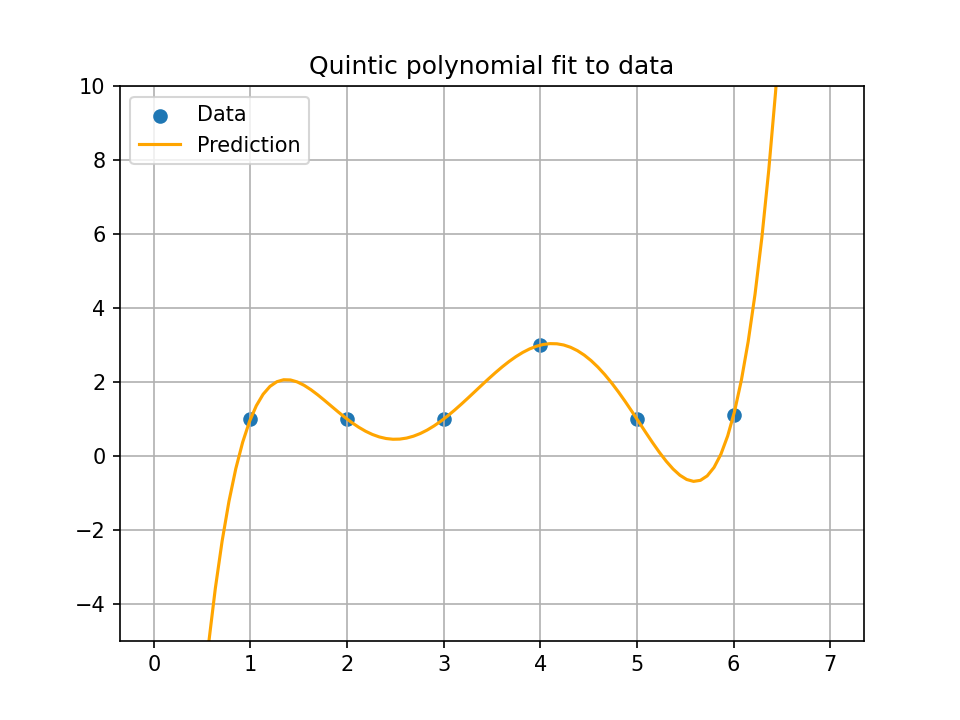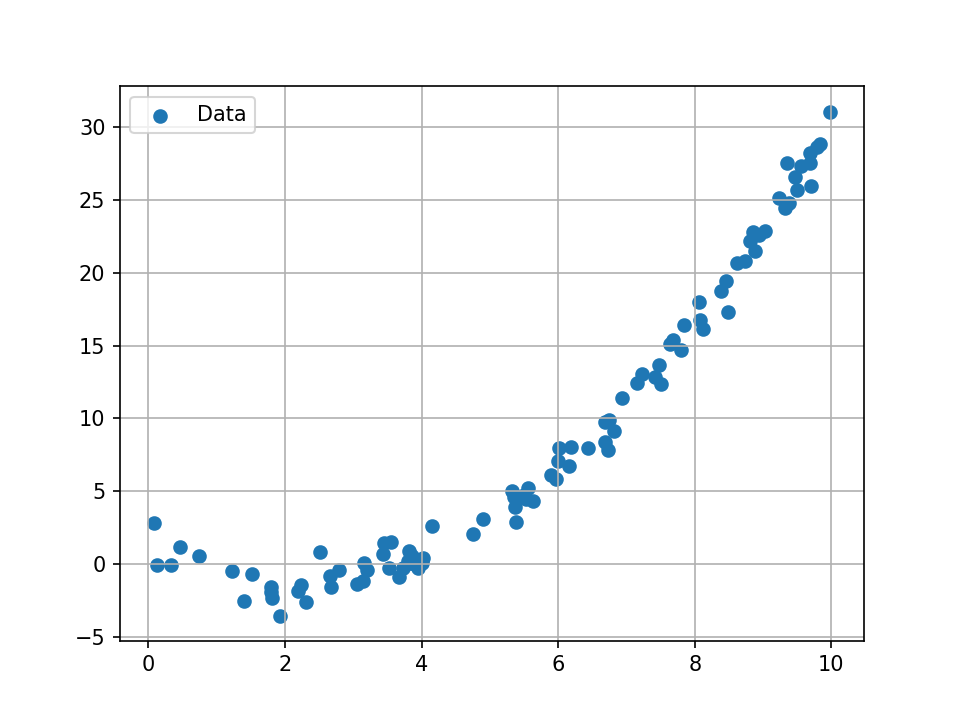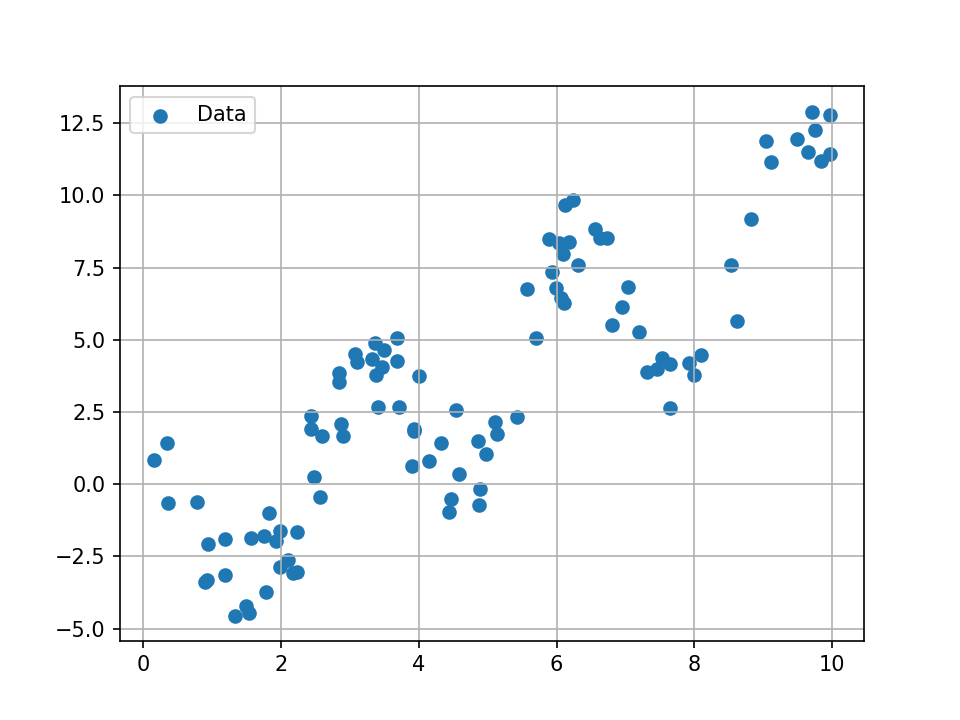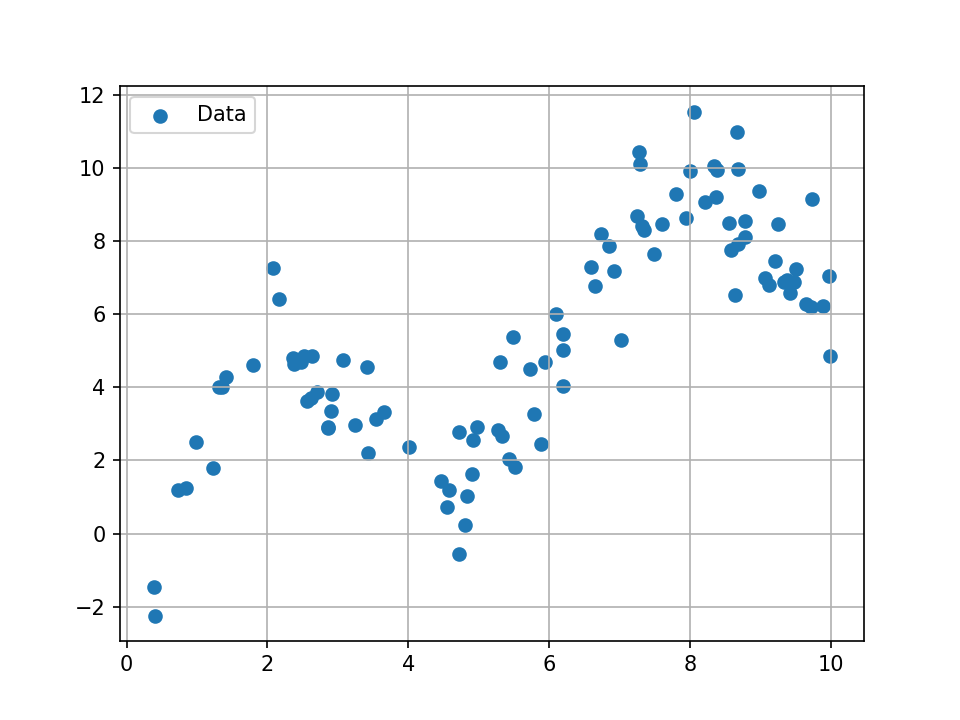Method
We first choose a model
We then decide a metric to evaluate how well the model is performing.
Finally, we search for the parameters
Outline
| Approach | Pros | Cons |
|---|---|---|
| Exact solution | Efficient | Solvable equations, overfitting |
| Least square | Efficient | Linear model, quadratic error |
| Netwon's method | Any model | Suboptimal, can diverge |
| Gradient descent | Any model | Suboptimal, slow |
Linear models
Linear models
Linear models are those of the forms:
Where
Note: the models are linear in the parameters
Examples

Examples

Exact solutions
Exact solutions
Given some dataset, we can first search for a solution that exactly fits the data.
In that case,
This approach is especially useful for interpolation.
Affine fitting
Let's start with the simplest example:

Affine fitting
First, let's define the model:
We can then write the equations:
Affine fitting
This yields the system of equations:
In matrix form:
Affine fitting
The solution is then:
Cubic fitting
We can also impose derivatives:

Cubic fitting
We have:
Then:
Quintic fitting
Now, what if we have 6 data points and want to find a model ?

Quintic fitting
The output will look like this:

Quintic fitting
We can notice the following:
- With exact solution, we need as much parameters as data points
- The model is overfitting the data, and will likely perform poorly on new data
Least squares
Linear regression
Suppose we have many data points and wand to find
Linear regression
If we write the system as seen before:
Problem:
This is because we only have two parameters, but many data points.
Minimizing an error
Idea: instead of finding
We will call this error
The most common error is the least squares error:
Minimizing an error
We then want to find
Least squares
We have a linear model and a square error.
Back to linear regression
Back to the linear regression problem:

Solving linear regression
First, let's write
We can expand it to:
Then, we can compute the derivatives with respect to
Solving linear regression
To cancel the derivatives, we then have:
Solving linear regression
Thus:
Substitute in the second equation:
Solving linear regression
This yields:
Example
We can then write some code to solve the linear regression problem:

A more general form
Remember that we can write the exact form equation as:
The loss function is then:
A more general form
This expands to:
The derivatives can then be computed as:
A more general form
Setting the derivative to zero yields:
And thus:
A more general form
The least square solution can then be obtained with the exact same approach as the exact solution.
import numpy as np
np.linalg.inv(A) # inverse
np.linalg.pinv(A) # pseudo-inverse
Linear regression with pseudo-inverse
We can then write some code using numpy.linalg.pinv to solve the linear regression problem. Yielding the same result:

Practical exercices
Let's write some Python!
On the next slide, you will find data and models.

Hint: to load the data, you can use:
import numpy as np
data = np.loadtxt('data.csv')
Let's write some Python!
Practical case: identifying a RR robot
Let us consider the following RR robot:

Practical case: identifying a RR robot
We have:
The model is linear in the parameters
Practical case: identifying a RR robot
Here are some data generated with this script.
They contain noisy measurements of
import numpy as np
data = np.loadtxt('data/rr_data.csv')
alpha, beta, x_e, y_e = data[0] # first data




